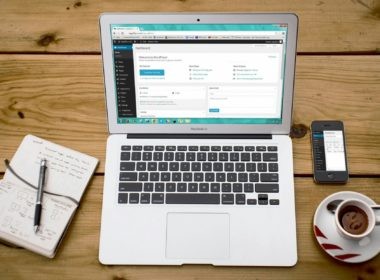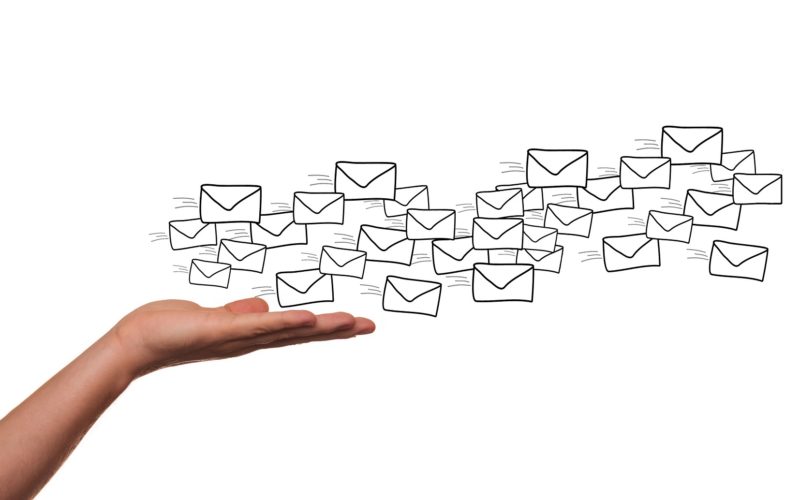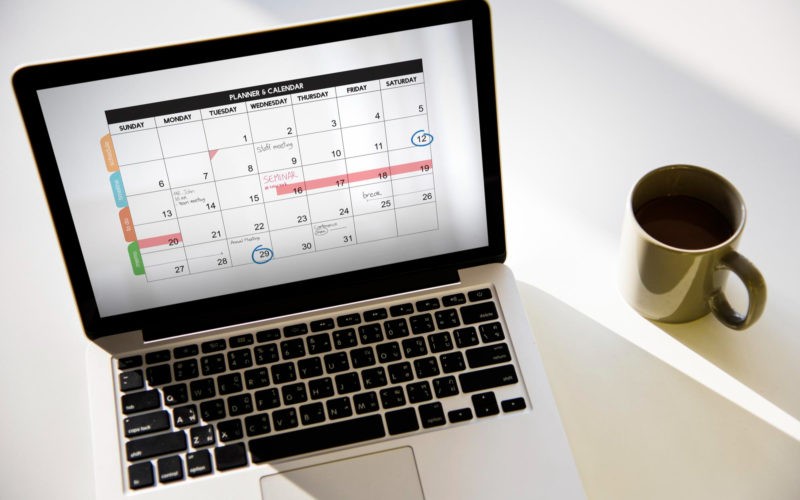Email marketing personalization extends way beyond addressing a subscriber by their first name in the subject line. It means shaping your content, offers, and timing to fit the individual interests of each person. When it’s done right, it makes your emails read like a personal message from a friend and not a mass sales email.
The brilliance of this strategy is that it fosters a real connection between you and your readers. People start trusting that the messages they get will resonate with their interests, needs, or pain points. In turn, your emails not only miss the spam folder but also have a better chance of triggering clicks, conversions, and long-term loyalty.
Why Personalization Matters More Than Ever
Subscribers receive hundreds of marketing emails daily, so standing out in the inbox is an everyday struggle. Personalization is not a nicety but a necessity — no one has time for a message that obviously wasn’t written with them in mind. When subscribers get the feeling the content is boilerplate, they’re much more likely to ignore or unsubscribe from future messages.
Additionally, data laws are becoming stricter globally, and individuals desire open, respectful management of their information. If you demonstrate that you’re leveraging data to make their lives more convenient and more relevant, you gain trust. Personalization improves your deliverability rates, reduces spam complaints, and demonstrates that you actually care about delivering value to each recipient.
Collecting Customer Data Responsibly
One of the building blocks of building customized campaigns is gathering the proper information without crossing lines. Requesting the proper data at sign-up — such as location, interest, or even product interest — provides you with the tools for segmented email. But it’s important to keep your requests to what you really need and to be upfront about why you’re requesting it.

Data protection laws such as GDPR require companies to handle personal data ethically, so transparency is essential. Whether you plan to segment your list by location or purchase history, let subscribers know how this information will be used to improve their experience. In this way, you’ll convince them to provide the correct information while maintaining a high level of privacy.
Creating Targeted Content That Connects
After you have the information, the second part is to utilize it to make your content more personalized to segments of your subscriber list. Rather than sending a single message to everybody, you can make several versions of the identical email centered on a few criteria such as geographic location or purchasing behavior. This means everyone will see what is most important to them — whether it’s local promotions, product recommendations, or events.
The tone and voice of your emails also matter. If you’re targeting busy professionals, you might opt for concise and straightforward language. If your audience is younger and more casual, a conversational style with a touch of humor may strike the right chord. Each small tweak in language or imagery boosts your chances of converting a casual viewer into a devoted fan.
Sending at the Right Time for Maximum Impact
Whereas email personalization is generally a question of customizing the message, timing is also important. The most elegantly crafted email will not succeed if it arrives in the inbox at a time your subscribers are occupied, asleep, or simply not in the mood to interact. That is where data on your audience’s behavior comes in handy.
Pay attention to when your users are most likely to open emails, click, or purchase. If you find that your segment of passionate travelers likes to browse offers late at night, send emails at that time. If you send emails in accordance with your subscribers’ routines, you’ll have a far greater chance of your email getting opened and responded to, rather than being buried in the wave of notifications.
Measuring Success with Analytics
There’s no use making your emails personal unless you can see if your effort is worthwhile. You can measure open rate, click-through rate, and conversion rate to understand the big picture, but probing further into single segments can indicate what really engages specific groups. You may learn that your New York segment is more sensitive to weekend offers and that your California group is better with mid-week promotions.

If you want a solid means of monitoring these trends, you can dig into real-time metrics using Google Analytics or another analytics solution that works with your email service provider. By connecting your campaigns to an analytics platform, you’ll be able to see what users are doing beyond the inbox — such as what pages they’re visiting, how long they’re staying, and whether they’re completing certain goals. These insights can help you optimize your offers, timing, and content so that each segment is getting the most relevant content possible.
Monitoring your progress over a period of time is also essential in order to see patterns and fresh opportunities. If you observe that some segments or types of emails consistently do better than others, you can reinforce those efforts. On the other hand, failing campaigns can be reassessed and optimized. This process of tracking and adjusting is what maintains your email marketing alive and impactful in the long term.
A Note on Possible Traps
As much as personalization can revolutionize your marketing, you should also avoid overdoing it. Sending too many emails to recipients — even if they are personalized — may be perceived as desperate or intrusive. The trick lies in showing respect for people’s inboxes by sending them actually valuable content and not suffocating them with your promotions.
Another pitfall we see all the time is making data too creepy instead of helpful. If your emails expose too much private information or try to guess too much about how users will behave, some of your subscribers will get creeped out. Always find a balance: use just enough data to actually be helpful and display that you’re paying attention, without crossing the line into invasiveland.
Constructing Long-Term Relationships Through Segmented Campaigns
Segmented campaigns enable you to address specific groups within your audience directly, but they also lay the groundwork for long-term relationships. As readers continually receive offers and insights that are pertinent to them, they begin to see your emails as a valuable resource rather than mere promotional noise. Over time, this builds a sense of loyalty and brand affinity that is extremely difficult to achieve through generic email blasts.

You can even marry email personalization with more extensive marketing channels. Some companies prefer to send bulk emails with a multi-channel marketing strategy involving push notifications, SMS marketing, and social media reach. This comprehensive approach ensures that subscribers are reached via the channels they truly prefer while offering numerous data points that can be evaluated to improve your messages, timing, and offers even further.
Testing With New Gadgetry and Techniques
Personalization needn’t entail hours of manual segmenting and writing hundreds of email variations. Most email marketing services have features such as dynamic content blocks, where you can include alternate text or images for alternate user segments in a single email template. This kind of automation can save huge amounts of time while still sending extremely personalized messages.
You can even use AI-powered tools for predictive analytics that spot trends in user behavior and provide recommendations for your campaign. Some systems, like Mailchimp’s automation tools, even allow you to create whole workflows that personalize content according to how engaged the user is. It may sound sophisticated, but these tools are increasingly user-friendly, enabling businesses of any size to give their email marketing a professional sheen without hemorrhaging cash.
Keeping an Eye on Deliverability
Even if your emails are just right for each recipient, they’re useless if they never hit the inbox. Maintaining your deliverability rate in good health means keeping on top of your sender reputation, domain authentication, and spam complaint rates. Ensure your subscribers really want to receive emails from you and that your subject lines are not deceptive.
One of the strongest defenses against spam is a responsive mailing list. When bounce rates or unsubscribes suddenly increase, reconsider the content and frequency of your mailings. It can also be a smart move to allow subscribers to choose the frequency of mailings from you. These small changes will ensure that your marketing is effective and that your subscribers’ wishes are respected.
Refining Your Segmentation Over Time
At first, you can segment your audience based on only a few elements: location, sign-up source, or interest in products. But as you collect more information and see real buying patterns, you will be able to segment even more finely. For example, you could have a segment for high-spending users who have expressed interest in add-on products.

Approach your segmentation plan as a dynamic entity that develops alongside your business. As you go along, you’ll discover the hidden preferences of your customers and new avenues to surprise and delight them via targeted campaigns. This ongoing calibration keeps your email relevant and customers anticipating what’ll show up next in their mailbox.
Wrapping Up and Final Thoughts
Personalized email marketing is not just a passing trend — it’s a proven method for fostering authentic relationships with your audience. By respecting data privacy, crafting engaging content, timing your sends with care, and continuously analyzing your performance metrics, you transform email marketing from a routine chore into a powerful tool for business growth.
Whether you’re starting from scratch or looking to build on a current strategy, these personalization principles will assist you in reaching the right audience with the right message at precisely the right moment. In a world where every brand competes for attention, personalized emails are your key to standing out, remaining relevant, and keeping your customers interested for the long term.
⸻ Author Bio ⸻
Lizzie Davey — A skilled writer and strategist with expertise in SaaS, e-commerce, and marketing, focusing on creating impactful, customer-centric content. Also shares resources to support freelancers in building sustainable businesses. Passionate about travel, paddleboarding, bouldering, and aerial silks.












